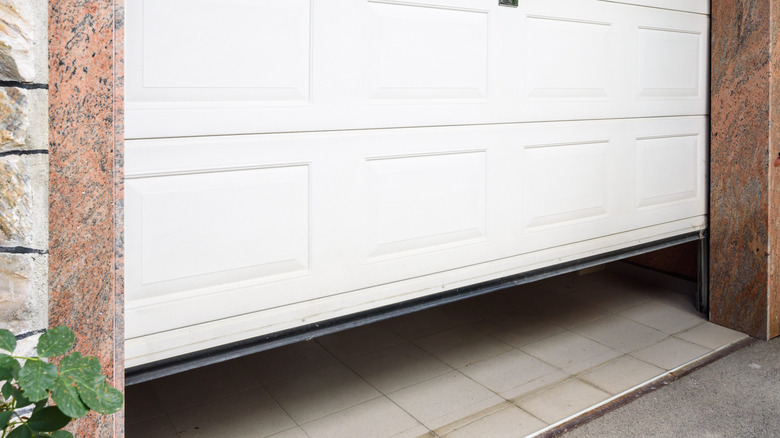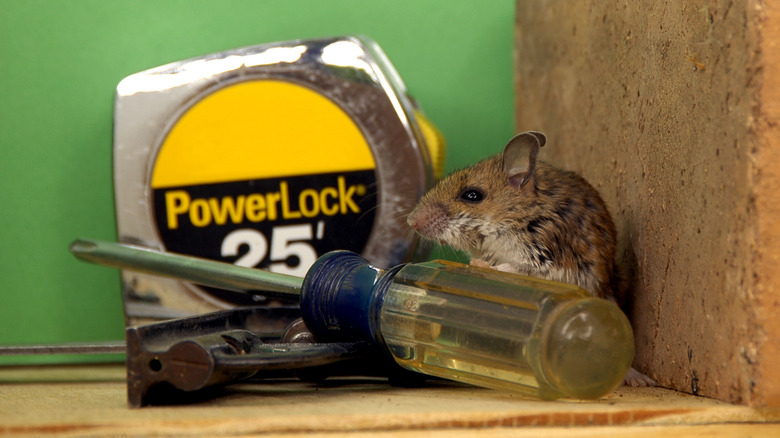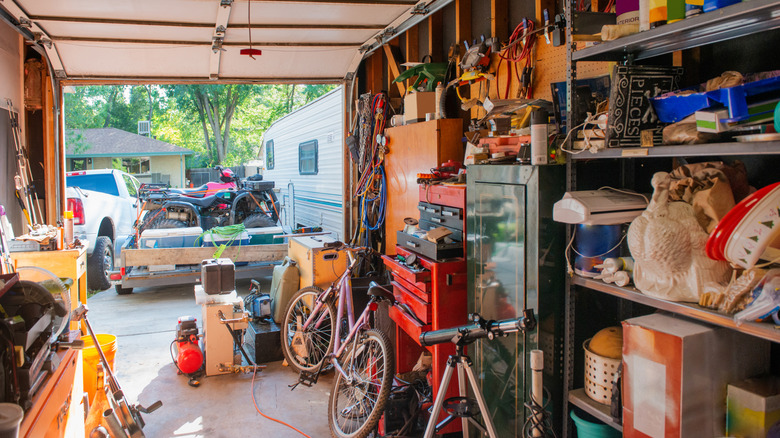Can Cracking A Garage Door Open Help Reducing Cooling Costs? Here's What We Found
When summer temperatures soar, so can your cooling bills. Many people will enthusiastically seek out smarter ways to reduce energy costs at home while keeping their indoor spaces comfortable, but there's one hack that might not work as well as you think. If you're cracking your garage door in the heat, you may just be adding to your overheating problem instead of relieving it.
Garages can be as much as 20 degrees warmer than the outside temperature, a significant difference in the hot summer months. Many think that keeping the garage door partially open encourages air circulation and helps to keep the garage cooler, but the opposite is actually true. Leaving your garage door open, even a little, can allow hot air to enter and push your HVAC system to work harder to keep the inside of your home cool. Unless you have a really great cross breeze, keeping your garage door open can actually make your home more energy inefficient by allowing heat to build up in your garage. If you insist on keeping your garage door open in the summer, one hack that is worth trying is running a fan in the garage to help push the hot air back out.
Why cracking your garage door open is bad idea
Since hot air rises, cracking your garage door in hot weather doesn't make much sense. By leaving your garage door open like this, you are essentially inviting warm air to come from a low-to-the-ground place into your garage, which has tall ceilings. It's easy for the hot air to rise up and get trapped in a space with poor ventilation. In addition to being energy inefficient, keeping your garage doors even partially open invites a whole host of other issues. First, your garage door was designed to either be fully open or fully closed. Leaving it cracked could put added stress on it. You'll make it more susceptible to damage like misalignment or broken cables and springs as a result, forcing you to deal with otherwise avoidable garage door repair costs. Rodents, insects, and other pests also see an open garage door as an invitation. They could build nests, chew wires, or even make their way into your home.
Open garage doors are also safety hazards. Thieves love to see these, and even a small gap might be enough for someone to slip under to make their way inside your home. Advances in technology also make it possible for intruders to reprogram your automatic garage door opener so they can access your home whenever they want. Finally, small children or pets could try to squeeze under a cracked garage door, causing injury.
Other ways to keep your garage cool
Keeping your garage well-maintained and properly insulated are better ways to keep it cool than leaving the door partially open. Start by properly weather-sealing your garage door. Even some simple cleaning and reorganizing of your garage might help, since clutter can inhibit air flow. Painting your garage doors a light color, which reflects heat, is another easy hack that could help reduce the temperature. Insulating your garage doors is probably your best bet, though. It's a straightforward DIY project that should take only a few hours but has a big impact. Insulated garage doors can reduce your energy costs by as much as 20 percent. While any insulation you add will help alleviate the heat, installing a layer of reflective insulation (which uses aluminum foil to keep radiant heat away) with a layer of fiberglass or foam board insulation is recommended.
Finally, if you use your garage a lot, consider calling a professional to add some proper ventilation. Since hot air rises, roof vents can help by giving warmer air a much better path out of the space than a cracked garage door can provide. Exhaust fans are another smart investment. Not only will these help push out warm air, but they have the added benefit of alleviating smells from car exhaust or garbage cans. The easiest hack of all, though, is to park your car outside for a few hours after using it on hot days. Hot air radiates off your car after it's been shut off, which can add a few degrees to your garage's temperature.


